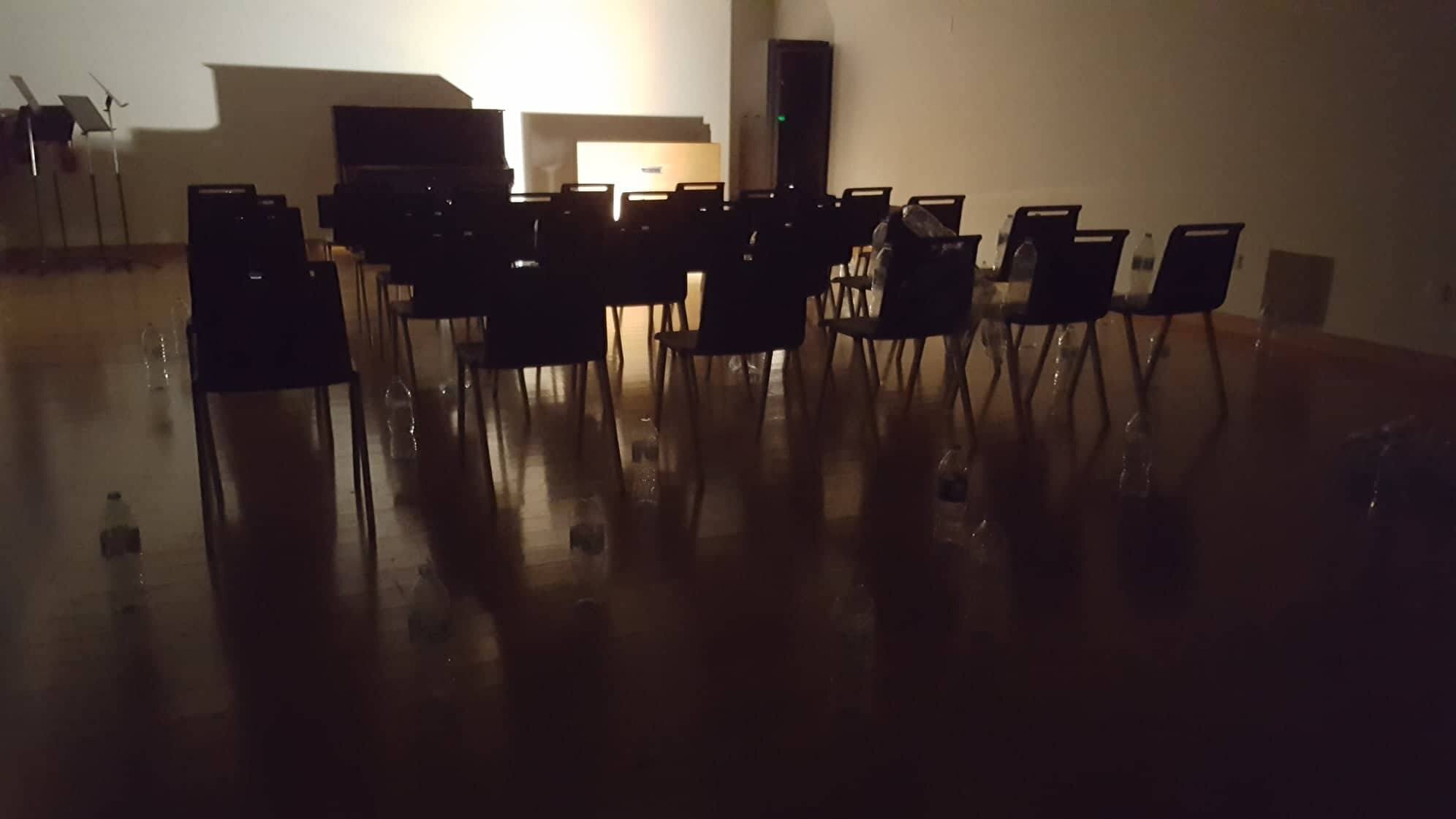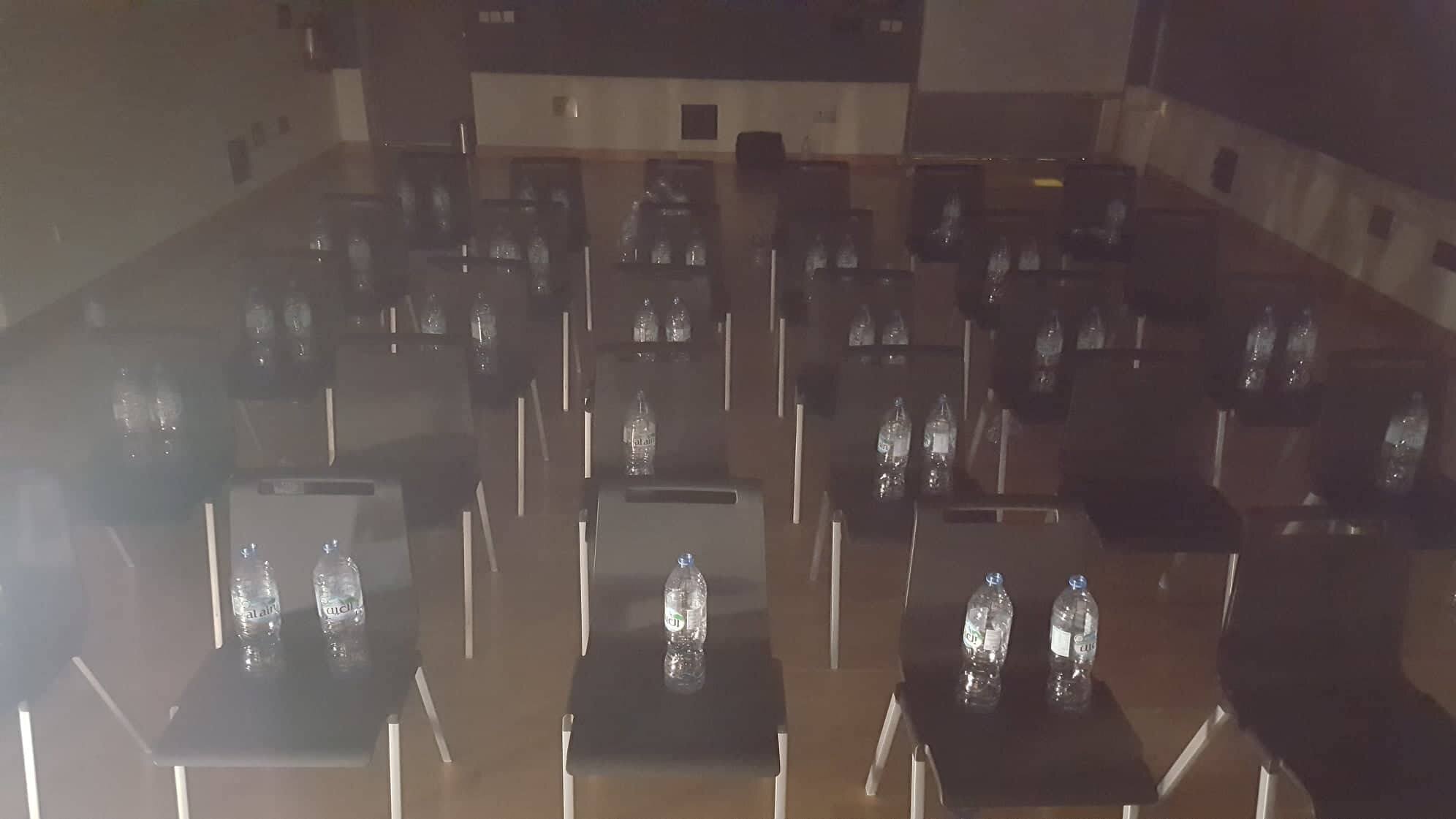A Concert for Plastic Bottles
I call plastic a friend. Do you?
With the global economic prevalence of petroleum, so came a massive abundance of plastic. With possibilities to chemically engineer it and thus, fulfill a plethora of purposes, plastic soon replaced wood, stone and metal in the crafting of everyday materials. Plastic has become so essential to us, we don’t even notice it. If you’re reading this on an electronic device, perhaps you weren’t fully conscious of its plastic components until reading this sentence.
Unfortunately, while plastic’s ubiquitousness has led it to blend into the background, it has also, more literally, begun to blend with the biosphere. Due to their strong polymerous molecular structure, plastics cannot biodegrade - through wear and tear, as well as photodegradation, they can be broken down into smaller pieces, but these pieces themselves will never go away. Once they’re reduced to smaller than five millimeters, they are referred to as a microplastic. Becoming aware of and understanding the existence of microplastics is crucial to understanding how and where plastics create impact on our world, both in the present and future.
These tiny things are, essentially, everywhere. The oceans teem with them. And when drinking from a plastic bottle, you are now probably ingesting some amount of microplastics as well. Plastics are not only all around us, they are within us too.
As plastics, micro or otherwise, become increasingly entangled with our environment, the inhabitants of the biosphere seem to be unable to escape interacting with them. Many of these interactions are quite gruesome and deadly, such as the albatross suffocated by plastic in Chris Jordan’s haunting short film Albatross (2017) or the cod raped by a dildo that Heather Davis opens her Toxic Progeny article with. Sometimes, biological beings have managed to successfully colonize plastic, using it to their advantage in survival. Davis mentions that microplastics “are becoming rafts of biodiverse ecologies for bacteria and viruses”. Scholar Kim De Wolff writes about a ghost net in the open ocean, where researchers have found “a host of coastal species: coral, reef fish, sea slugs and even a lone oyster”. She also writes of the Velella vellela, a species of jellyfish, which is perhaps a very direct example of a fusion between a biological being and a synthetic plastic: “Velella vellela may have incorporated synthetic materials right into their bodies. [...] They are both plastic and jellyfish.” Plastic is not only around us and within us, it is becoming a part of us.
With plastic production showing few signs of diminishing and the rising inevitability of entanglement between biological beings and plastic material, it seems to me that efforts to “save the environment” from plastic need to go in two directions: first, we must try to move away from the mass production of plastics; second, we must learn how to live with existing plastic, and to minimize the damage it causes. It is the latter problem that fascinates me. What does learning how to live with plastic entail?
In their futurist speculative fiction piece The Ragpicker Meets the Composter, Ståhl and Lindström present us with a glimpse into a future where plastic is much more valued than it is in the average human’s mind today. The Ragpicker spends their working days collecting scraps of plastic washed up on the shore, and has a certain appreciation for the plastic that we presently do not have. “Look at this beauty! It’s got shimmering stones and a toothbrush almost in disguise. I think I want to keep it as it is.” the Ragpicker says, and then mentions how the other ragpickers make jewelry out of the plastiglomerates (stones containing sediments and other natural debris, but held together by plastic) that they find - a process of literally turning trash into treasure, meaninglessness into art. This appreciation for plastic is in line with political theorist Jane Bennett’s ideas of vibrant materialism, which mentions that “vibrant materialists... linger on those moments during which they find themselves fascinated by objects”. It is in a vibrant materialist approach where the Ragpicker excavates this kind of fascination and value for the plastic they come across, directly contrasting with the way that most humans perceive plastic currently.
The writer Heather Davis asserts, “Although plastics appear as mere surface, designed to be discarded, and are associated metaphorically with change and malleability, plastics are actually extremely obdurate materials”. Even though we often regard plastics as temporary, using them only once and then simply throwing them away, they outlive both our expectations and even our lives. Because they will be around for longer than supposedly intended, they can thus be useful for longer as well. So, if us humans could harbor a higher appreciation of plastic, like the Ragpicker or, in some sense, even befriend the material, we would be less willing to just throw it away. Instead, we would rather prioritize searching for methods to optimize its usefulness, even impose on it a new purpose - one that is more emotional rather than pragmatic.
How can humans begin to befriend plastic? This is the main question around which my art piece was conceived. The piece was a concert where the main intended audience, rather than humans, was a crowd of empty plastic water bottles. Music, or merely sound, is an interesting area to explore in the quest to befriend plastic. Unlike art that is solely visual, sound waves create vibrations that are capable of transmitting energy not only to our eardrums, but also to other various materials. I first became aware of this at a rock concert, when I felt my half-empty plastic water bottle vibrating from the band’s loud bass. But I noticed it would vibrate only when particular notes were played, likely because these notes corresponded to the harmonic frequencies of the bottle. The fact that these vibrations are not only intermittent, but in fact selective, is fascinating. Like a human who is emotionally moved by a particular song attached to a memory, the plastic bottles are moved by particular frequencies within sounds that match their current size and shape. This makes sound a medium that physically interacts with the plastic bottles in ways that are comparable to mere touch or even hearing, thus inviting the human audience of the piece to consider what the water bottle might be experiencing in the moment.
The concert does not exist by itself, however. There is a short curtain speech before the human audience enters the room, where I explain that the audience has already been seated and that there may be only a few seats still available. This part elaborates on the social and political positioning of the bottles within the piece. It directly prompts the human audience to consider the empty bottles as more than just trash - the bottles are now clearly audience members, presumably also here to enjoy the song. The fact that the bottles far outnumber the humans and that they sit on the floor, not just on the chairs, is important to the piece. The human audience is asked to be careful with the plastic audience when entering the space, suggesting the bottles rank socially level to the humans. Once more, the bottles are no longer considered mere garbage, or beneath us; they are equal audience members. Portraying them as such invites a host of other various associations we have of theater audience members: they are wealthy enough to afford a seat; bumping into them creates awkwardness. When a human bumped into a water bottle during my piece, the rest of the human audience gasped, almost as if she had stepped on some important person’s foot and caused a commotion. Additionally, we think the theatregoers have set aside time for their leisure, choosing to go to a concert, and not just any concert, but with regards to my piece, a solo music recital sung by a suited man on an elevated platform with atmospheric lighting… they have a particular taste. Within my constructed scene, the bottles thus elevate themselves from their performative capability as trash; they morph into plastic wrapper-wearing audience members at a bourgeois classical music recital.
One last important choice was the the song. In the little introductory speech for the song, I explain that it is very significant to me and that “it is about love and the Moon”. The song is in fact Luna de Margarita written by Venezuelan singer and composer Simón Díaz, and when I say that it means a lot to me, I sincerely mean it. Margarita is the name of my island home in Venezuela. While growing up, I have also always been enamored by the Moon. Moreover, Luna de Margarita appeared in the movie Pina by Wim Wenders, which is a matter of pride to me, seeing a piece of my culture in a documentary about one of the last century’s greatest artists. The water bottles do not have a brain and hence they will never be able to grasp this last sentence as you, my dear human reader, just have. But what matters is the intention. If we humans fully open up to the water bottles, we will begin to get closer to befriending them, or to at least start shifting the way we perceive them and treat them. Sharing important memories and emotions are, after all, important in nurturing a friendly relationship.
Thus, the piece constitutes an experience that invites its human audience to reconsider the value and existence of plastic water bottles and, hopefully, other plastics in their lives. Perhaps the next time they drink from a plastic water bottle, they will at least remember having sat next to their kind in a concert and begin to develop a sense of kinship with them, maybe even prompting them to become closer to the bottle, learn more about it, and take better care of it.
This piece stems from an assignment that involved creating a 5-minute art piece on Plastics. The art piece consisted of a one-song concert inside a room where both class members and a mass of empty water bottles were considered part of the audience.
Photographs courtesy of the author.
Header artwork by Aurora Robson.
References
Bennett, Jane. “Vibrant Matter.” London, Duke University Press Durham, 2010.
Davis, Heather. “Toxic Progeny: The Plastisphere and Other Queer Futures.” Philosophia, a Journal of Continental Feminism, vol. 5, no. 2, 2015, pp. 231-250.
Jordan, Chris. “Albatross.” Chris Jordan Photographic Arts, video, http://www.chrisjordan.com/gallery/midway-film/#trailer.
Lindström, Kristina; Ståhl, Åsa. “Plastic Imaginaries.” Continent, vol. 6, no. 1, 2017, pp 62-67.
De Wolff, Kim. “Plastic Naturecultures: Multispecies Ethnography and the Dangers of Separating Living from Nonliving Bodies.” Indeterminate Bodies, special issue of Body & Society, vol. 23, no. 3, 2017, pp. 23-47.





